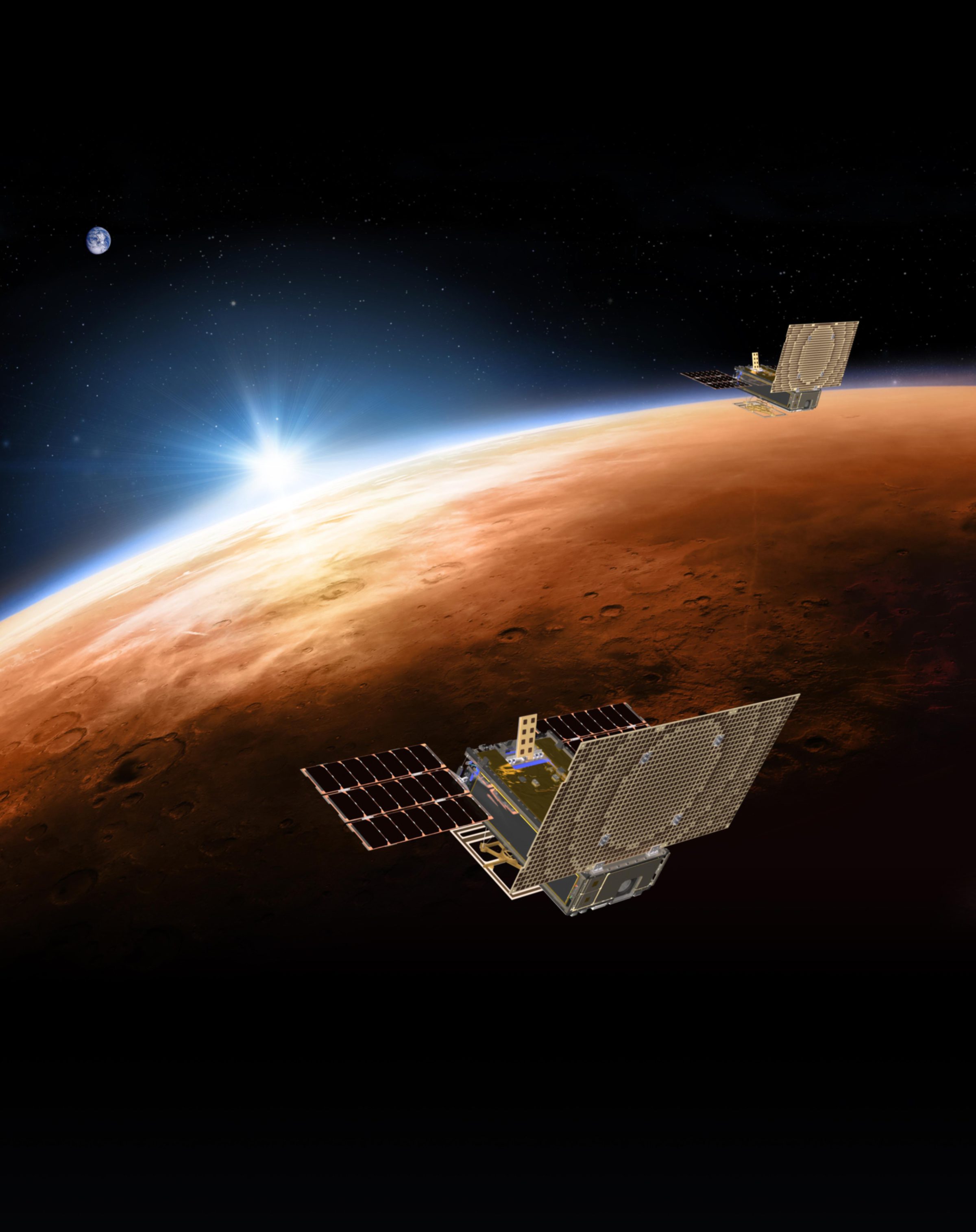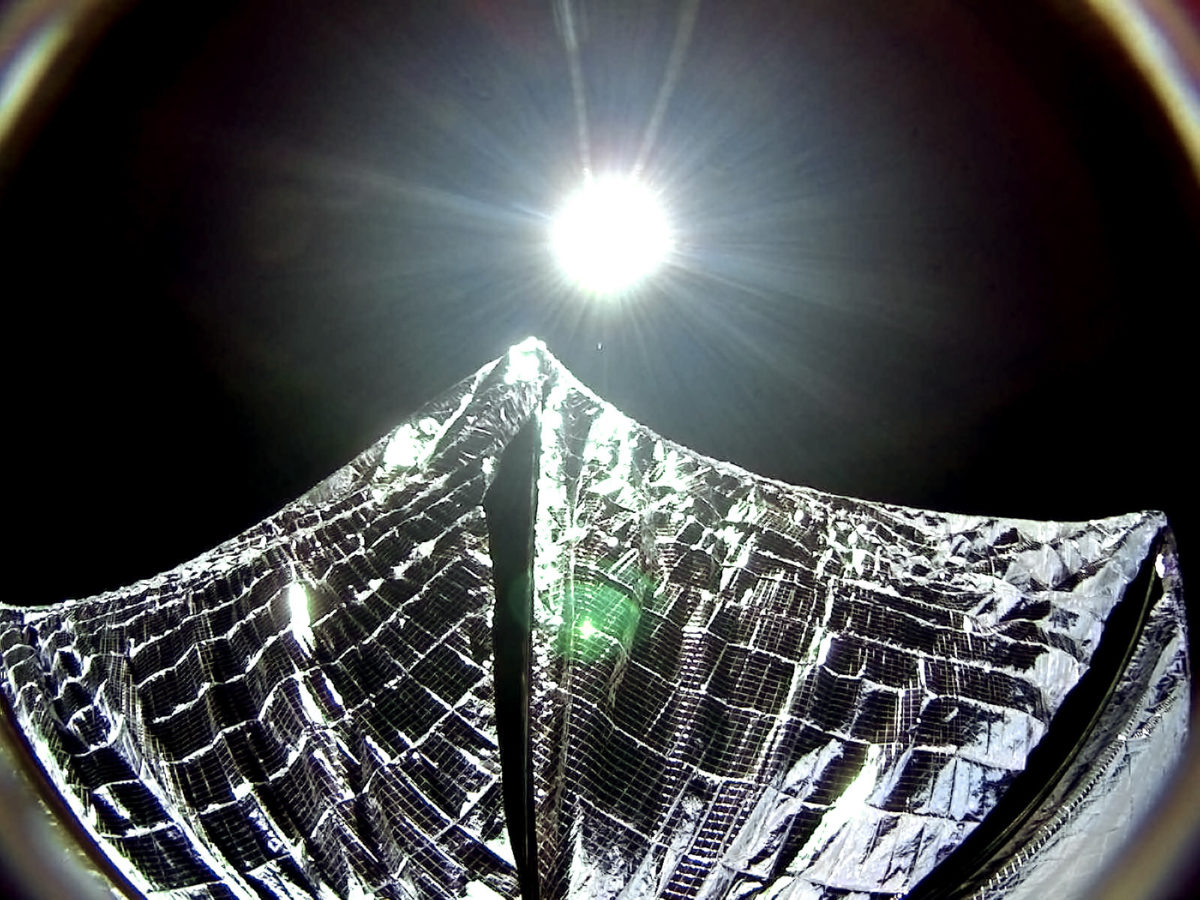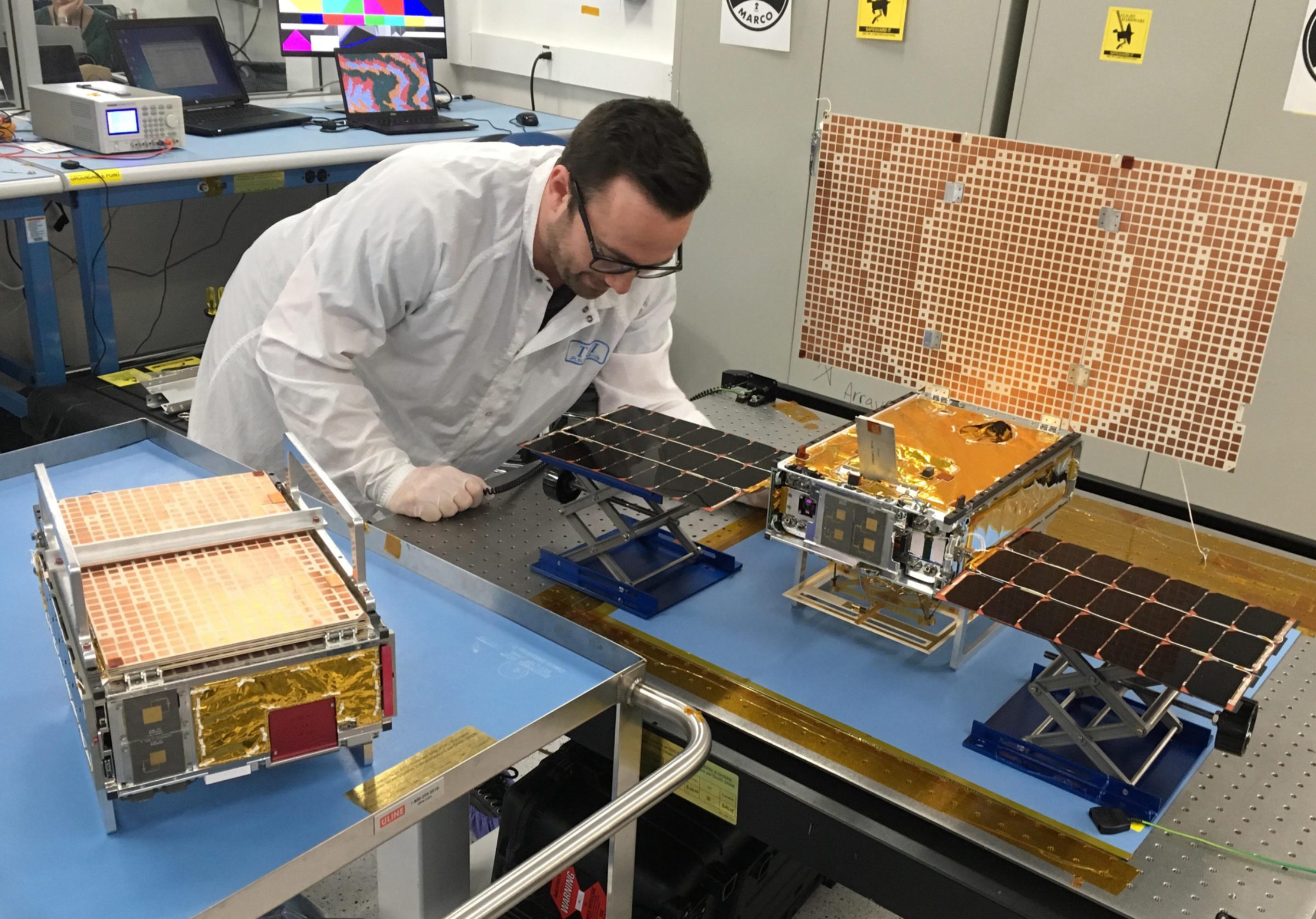Jason Davis • Sep 26, 2018
How LightSail and a NASA study helped pave the way for Mars-bound CubeSats
In deep space, about 70 million kilometers from Earth as of late September, two tiny CubeSats called MarCO A and B are hurtling toward Mars. They launched in May on the same rocket as NASA's InSight lander, and now flank the spacecraft by a couple thousand kilometers each.
As InSight descends through the Martian atmosphere on Nov. 26, it will broadcast its progress on short-range radio. The MarCO CubeSats will listen as they skirt past Mars, and relay InSight's signal back to Earth in real-time; at least, as real-time as you can get for a signal traveling at the universal speed of light. Just in case MarCO A and B aren't able to carry out their mission, the Mars Reconnaissance Orbiter, or MRO, will also be listening, and eventually get around to sending home its data, too.
The MarCO project — formally, Mars Cube One — is a technology demonstration to see whether you can trust small satellites with big planetary exploration jobs. The two spacecraft cost $18.5 million, just a fraction of InSight's price tag, which is now $829 million after a two-year project delay.
CubeSats come in standardized sizes, the smallest of which is a 10-centimeter-per-side box weighing just a few kilograms. Thus far, they have been limited to Earth orbit; MarCO A and B are the first deep space CubeSats. It's an impressive accomplishment for a concept many people regarded with derision when it debuted 15 years ago.
"I didn't think that people would criticize it as much as they did," said Bob Twiggs, co-creator of the CubeSat standard, in a 2014 Spaceflight Now interview. Twiggs, a Stanford engineer and professor who championed the idea with Cal Poly's Jordi Puig-Suari, recalled people saying, "That's the dumbest idea I've ever heard. Nobody's going to use this toy."
CubeSats were originally designed to give university students first-hand experience with space missions. And for many MarCO team members, that experience has paid off.
"As students, they messed around with CubeSats, when many people didn't take CubeSats seriously," said Joel Krajewski, the MarCO project manager at NASA's Jet Propulsion Laboratory.
MarCO A and B are just the opening salvo of a new wave of CubeSats ready to conduct first-rate exploration beyond Earth orbit. In 2020, 13 CubeSats will hitch a ride to lunar space aboard the Space Launch System. More are in development for future planetary missions.

How did CubeSats evolve from a dumb idea to interplanetary capable missions in just 15 years? Unlike large, expensive spacecraft that rely on proven technology, CubeSats have the flexibility to be riskier and try things that aren't guaranteed to work. This has allowed the industry to learn from mistakes and evolve new technologies quickly.
This is important for agencies like NASA that seek space hardware with a high technology readiness level, or TRL — a metric that assesses the maturity level of a particular technology. NASA supports the CubeSat industry through programs like ELaNA (Educational Launch of Nanosatellites), which helps CubeSat providers find free rides to orbit as secondary rocket payloads. To date, ELaNA has helped 18 groups of CubeSats get to space (including The Planetary Society's LightSail 1).
Another NASA program, SIMPLEx, funds CubeSats to fly on planetary exploration missions. The agency's current SIMPLEx solicitation is looking for SmallSats — which could include CubeSats — to fly on the upcoming Lucy and Psyche missions.
It didn't take long after CubeSats first launched in 2003 for some people to see they could be used in deep space. Robert Staehle, who is now the assistant instruments division manager for advanced concepts at NASA's Jet Propulsion laboratory, attended a Nov. 2010 workshop called GAINSTAM (Government and Industry Nano-Satellite Technology and Mission) in Huntington Beach, California. The Boeing-sponsored event hoped to raise awareness of the potential for small spacecraft.
At GAINSTAM, Staehle said he listened to a presentation by Tomas Svitek, the founder of Stellar Exploration, Inc., on The Planetary Society's LightSail 1 mission. At that point, the spacecraft had passed its critical design review.
LightSail was designed to demonstrate the feasibility of solar sailing for small spacecraft. Its key technology was the ability to package a 32-square-meter Mylar sail, deployment motor and sail booms into a 10-by-10-by-30-centimeter spacecraft — and still have room to spare for batteries, avionics, and cameras. Staehle, who had also taken notice of early JPL efforts to miniaturize spacecraft components, was intrigued. He knew propulsion was a key technology holding CubeSats back from a broader range of usages. Might solar sailing be a key piece of the puzzle?
"I thought, if I scale up what [Svitek] is doing by a little bit, I can get more out of it — a few kilometers per second, per year, maybe," recalled Staehle, referring to the change in velocity gained by solar sailing. "I thought, I bet you can do interplanetary.”
Staehle assembled a team of experts and came up with a reference design for a solar sailing, 6-unit CubeSat measuring 30-by-20-by-10 centimeters. It was just double the size of the diminutive LightSail 1 spacecraft, yet it would be capable of conducting an interplanetary mission. He pitched the idea to Puig-Suari, the CubeSat co-inventor.
"I said, 'We can do this in 6U,' and Jordi's jaw dropped," Staehle said. "He said, 'You're right, we can do this."
The group prepared an abstract for a presentation to be delivered at an upcoming SmallSat conference. They figured it was an easy sell, but to their surprise, the abstract was rejected.
Just two days later, Staehle said, NASA put out a call for proposals for NIAC, the NASA Innovative Advanced Concepts program. NIAC provides seed funding to help mature next-generation technology projects. It was the first NIAC call in years, so the competition was fierce. But Staehle's team turned their SmallSat abstract into a proposal, submitted it for a NIAC grant, and won $100,000 to study CubeSats for interplanetary missions. The team concluded their work with a final report in 2012. Two Planetary Society staff members co-authored the report: Bruce Betts, who is now the Planetary Society's chief scientist, and Louis Friedman, the executive director emeritus.

In hindsight, some of the report's predictions are quite prescient. It listed six technologies that would need to improve for CubeSats to do planetary missions: miniaturized, radiation-hardened electronics; small, high-quality science instruments; new trajectories allowing spacecraft to get to their destinations using low-thrust propulsion; optical communications; solar sailing; and onboard data processing to save bandwidth. About half of these technology improvements now exist; the rest are either in development, or alternatives have stepped forward.
Optical CubeSat communications are no longer as urgent, thanks to a JPL-developed radio transponder called Iris. Iris is the key technology behind the MarCO mission. Available in different-size versions, the one inside the MarCO CubeSats, measures just 10-by-10-by-10 centimeters — one CubeSat unit — and weighs barely more than a kilogram. Yet it can communicate with NASA's Deep Space Network from Mars, thanks to a super-thin, foldout antenna.
"The miracle of that technology is the packing factor when the CubeSats are stowed," said Krajewski, the MarCO project manager. The antenna is just a little more than 1 centimeter thick when folded up.
Many of the CubeSats' other components come from an increasing number of companies who produce small, radiation-hardened electronics. The attitude control system, built by Blue Canyon Technologies, contains 3 reaction wheels, a star tracker, an inertial measurement unit, and sun sensors. All of that packs into a volume of just 500 cubic centimeters — about 0.5 CubeSat units.
"For CubeSats of our size, it's really an enabling technology," Krajewski said.
The spacecraft have already completed two small trajectory correction maneuvers — the first by CubeSats in deep space — using a cold gas thruster system built by Vacco. The system uses a tank of the same liquid found in some fire extinguishers, stored under pressure. That liquid expands in a staging area and gets shot out of nozzles to produce thrust and to offset excess momentum from the spacecraft's reaction wheels.
The MarCO CubeSats' computer and power control boards are built by a company called AstroDev. The computer runs on just 90 milliamps — a fraction of the spacecraft's overall power capacity.

Another of the six technologies Staehle and his colleagues envisioned in 2012 was the use of an "interplanetary superhighway" constructed using advanced math that allows low-thrust CubeSats to move between celestial objects. NEA Scout, which flies to lunar orbit in 2020 with the Space Launch System, will travel this superhighway using a solar sail, which will allow it to leave lunar orbit and visit a nearby asteroid.
There are multiple science instruments that now fit in a 2-unit CubeSat volume, Staehle said, including an infrared spectrometer developed by NASA's Goddard Spaceflight Center, and a gamma-ray/neutron spectrometer built by Arizona State University. Development on the last of the six technologies, onboard data processing software to save bandwidth, is still ongoing.
On May 9, just a few days after launch, the MarCO CubeSats snapped a picture of Earth and the Moon as they sped into deep space. The tiny, off-the-shelf cameras, made by a company called Gumstix, were almost an afterthought, tucked into corners of the spacecraft at the last minute.
More pictures are yet to come. Shortly before MarCO A and B reach Mars, Krajewski said they will snap pictures of the red planet. They won't look like the gorgeous images we see from full-size spacecraft, yet they will speak volumes: Interplanetary CubeSats have quite literally arrived.

Let’s Go Beyond The Horizon
Every success in space exploration is the result of the community of space enthusiasts, like you, who believe it is important. You can help usher in the next great era of space exploration with your gift today.
Donate Today

 Explore Worlds
Explore Worlds Find Life
Find Life Defend Earth
Defend Earth

